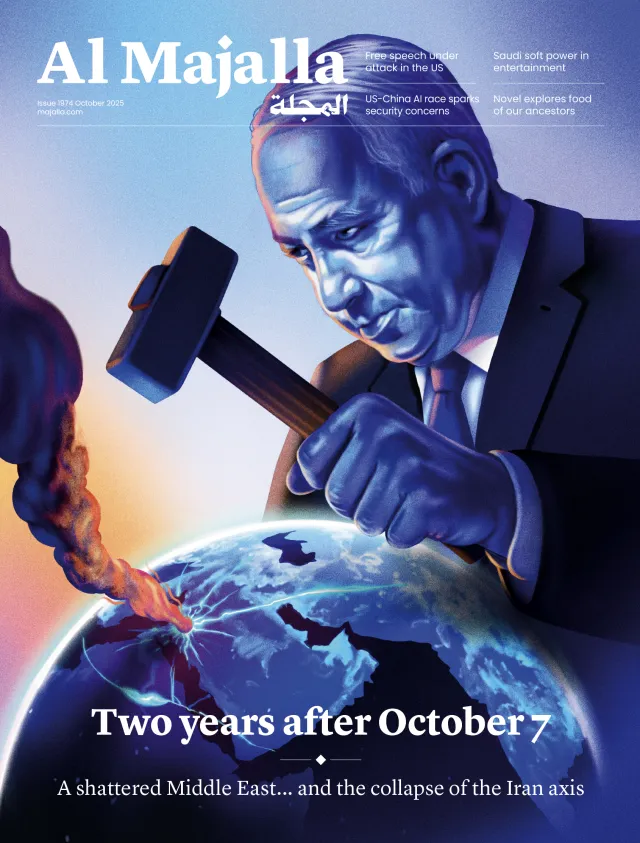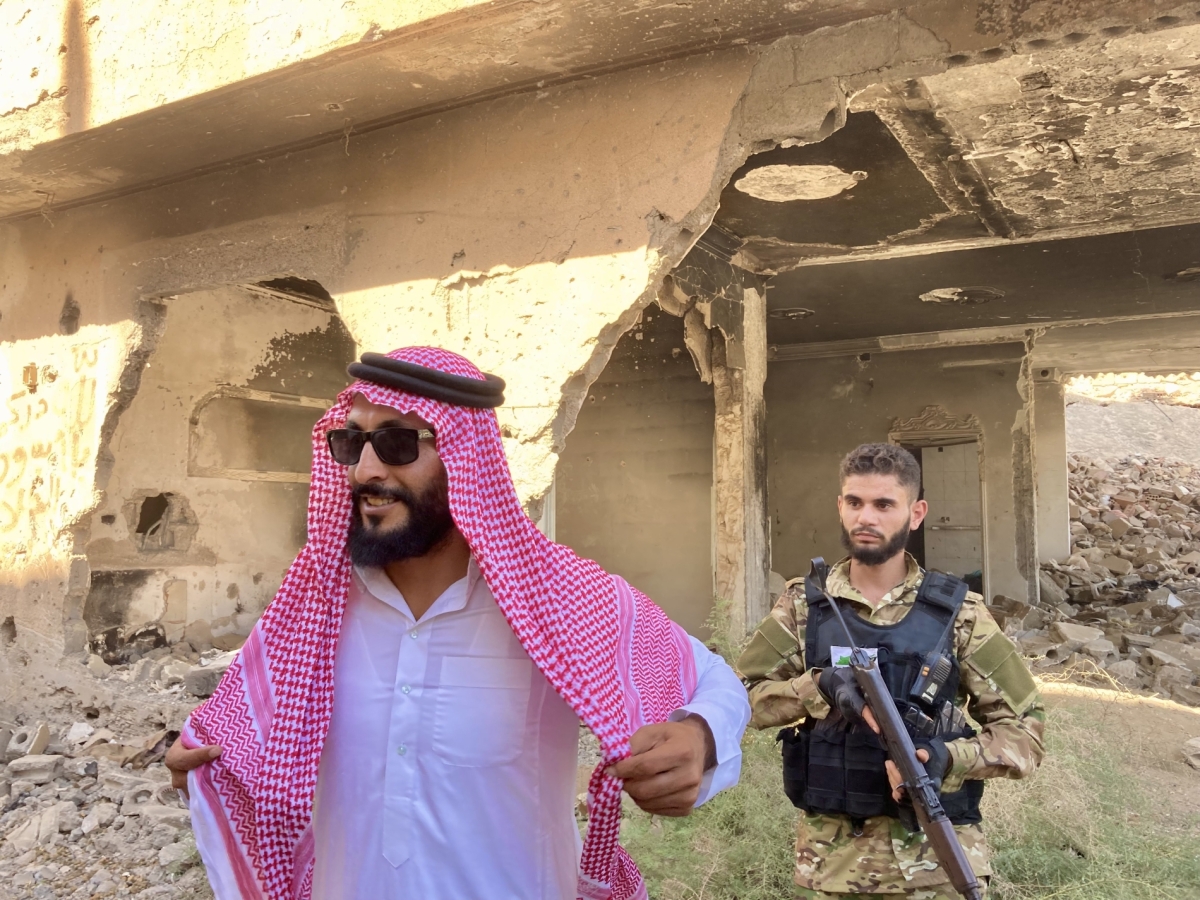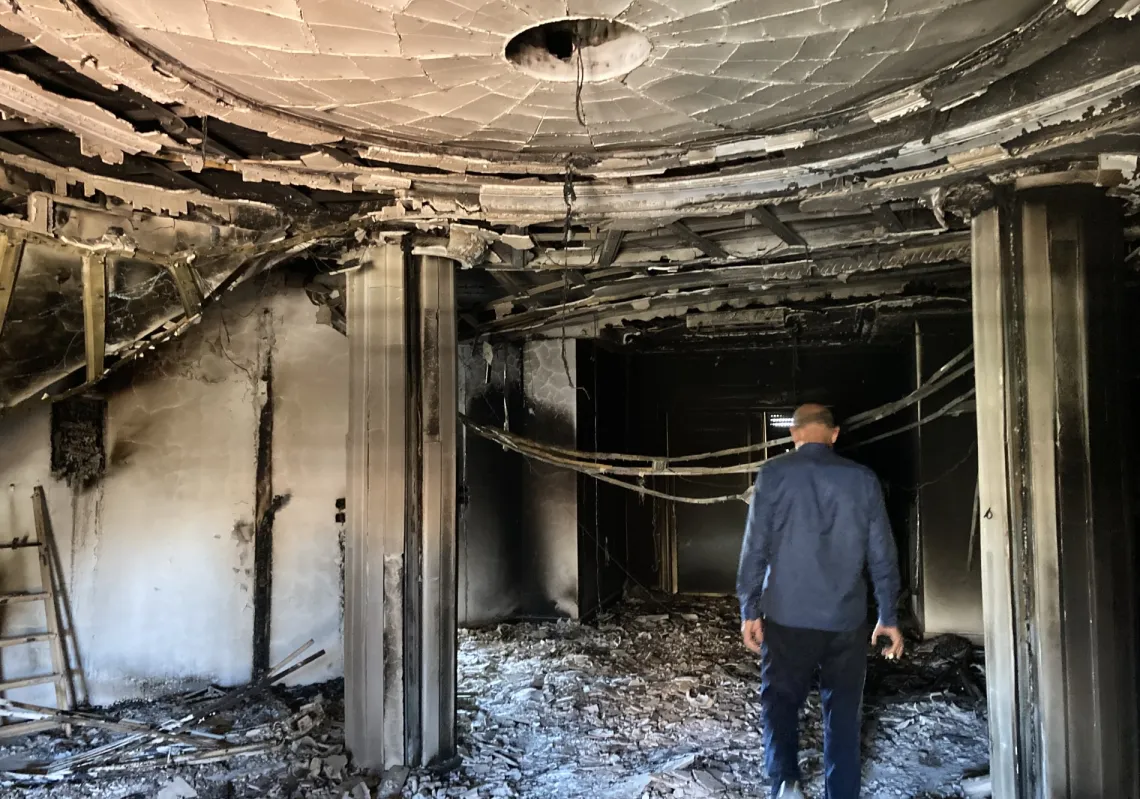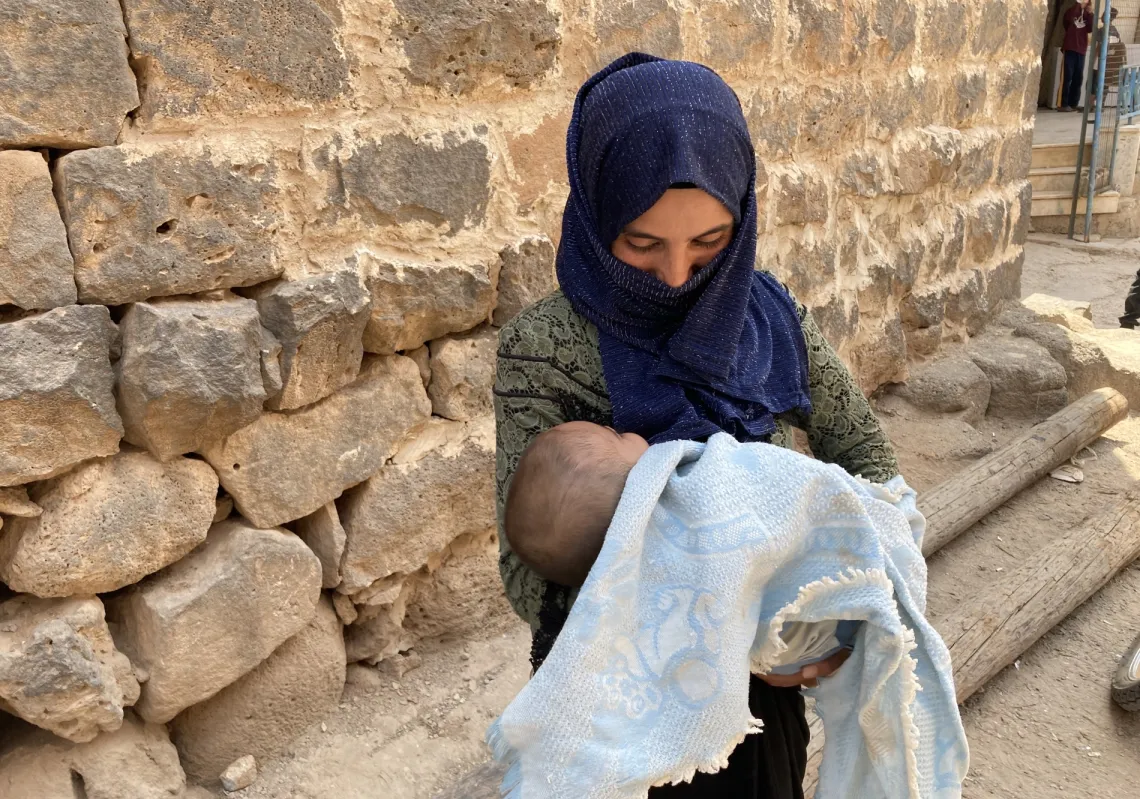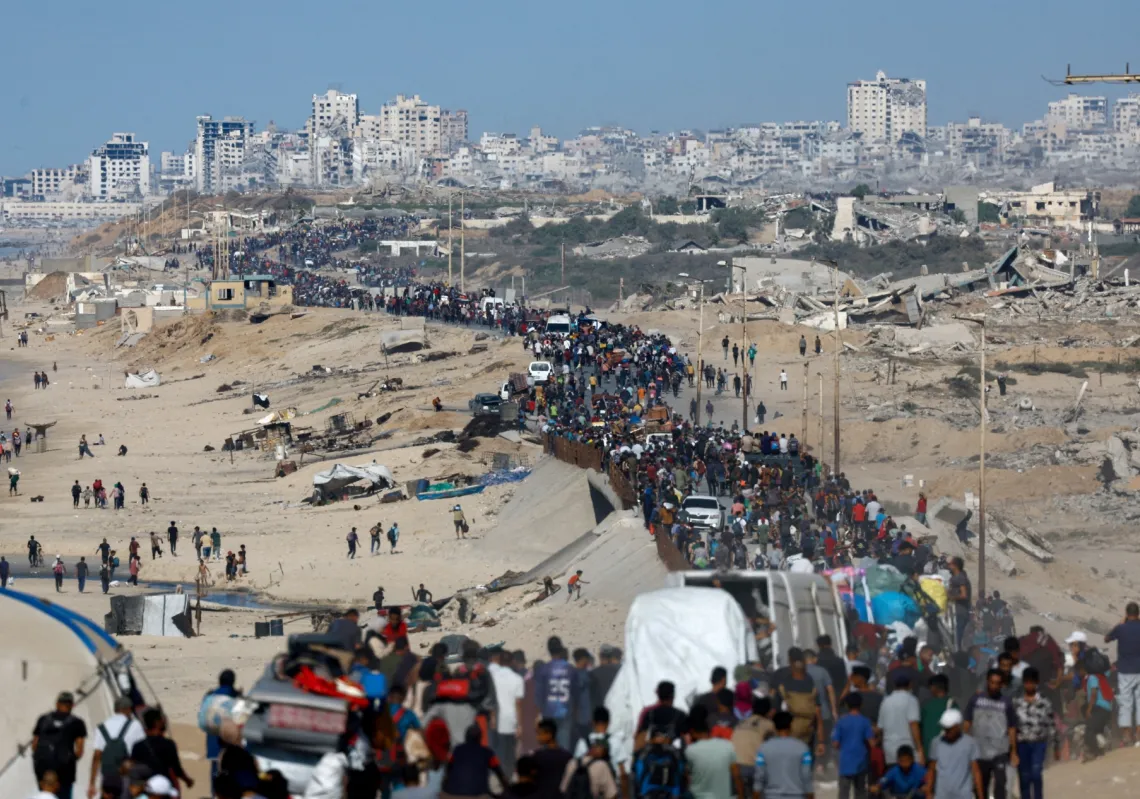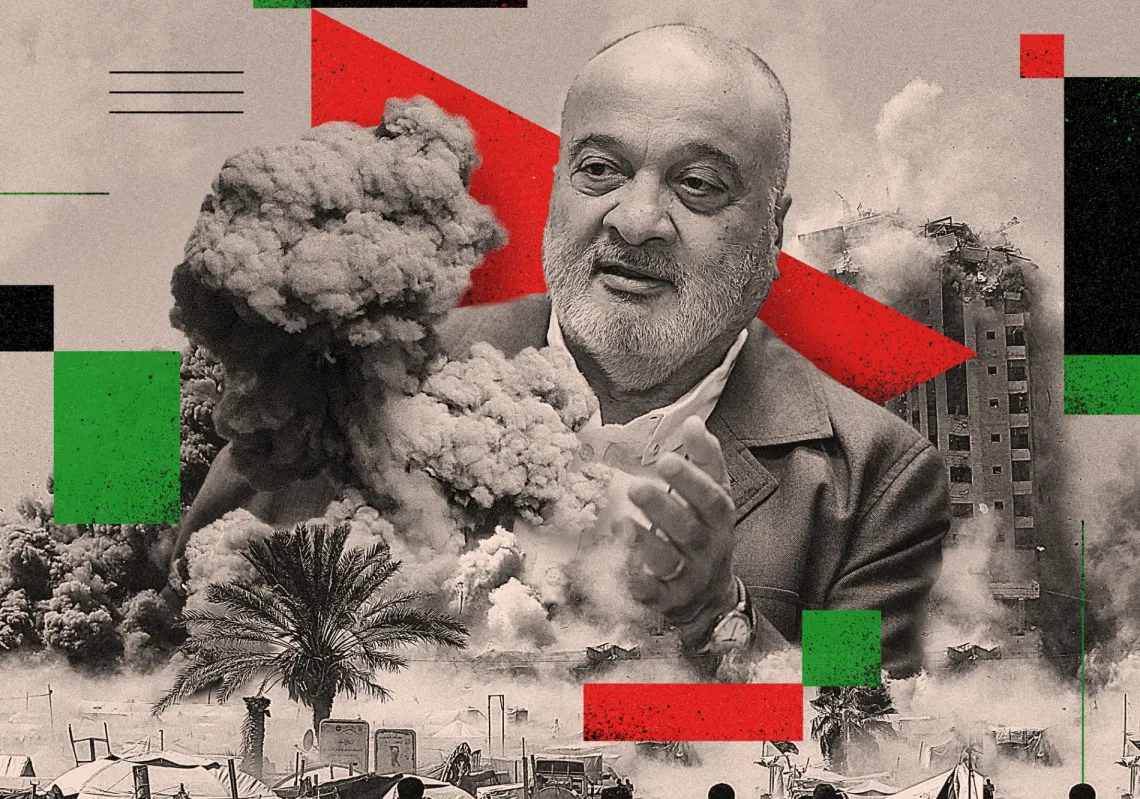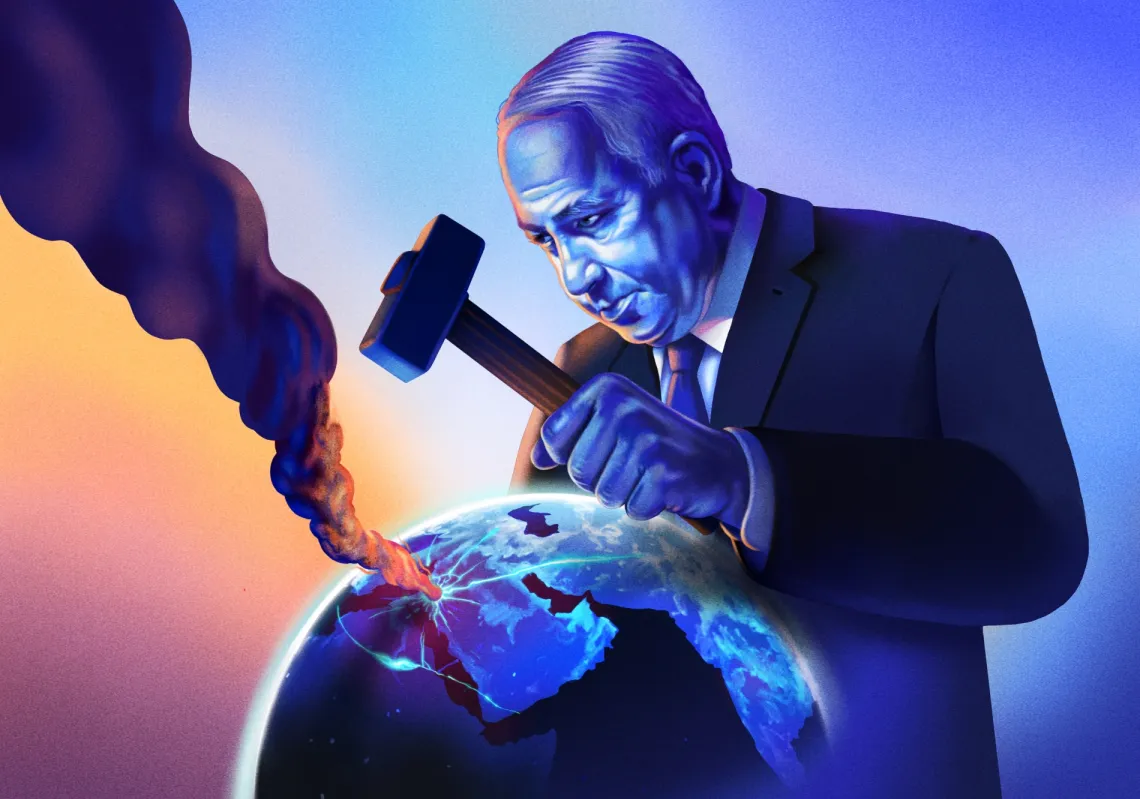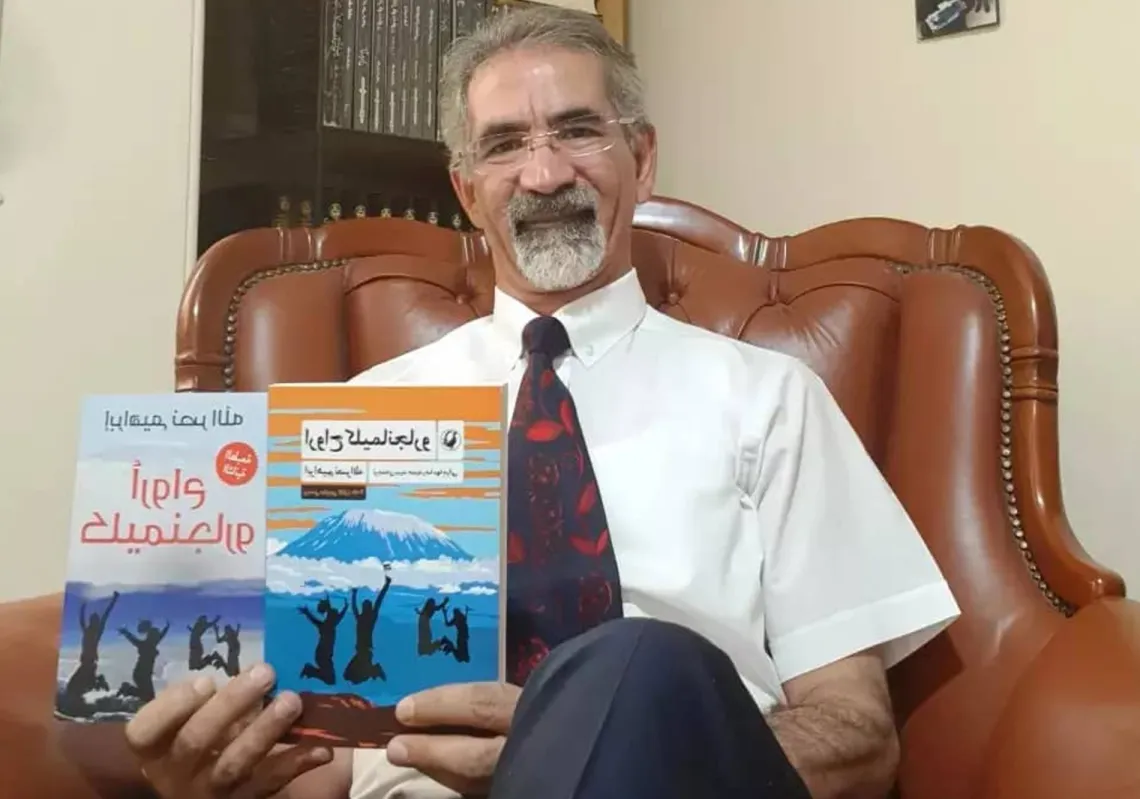Deir ez-Zor: “That was where military security would shoot at us,” a young man in uniform told Al Majalla on a ride through some of the parts of this regional capital in eastern Syria in mid-September, pointing at the tallest building at the end of a road.
“We were holed up there,” he added, pointing to lower buildings. “And moved between the alleys. Can you see how close we were? For months that was the frontline.”
Almost all the buildings around for kilometres on end have gaping holes, if still standing at all: drone footage from overhead shows a dusty, cratered and crumbling wasteland. Women carrying plastic sacks with bread, a few men careening through on motorcycles, and children seen flitting in and out of the ruins when on the ground, however, are proof that some have remained and others have returned.
Formerly in Syria’s opposition forces, the young man who spoke to Al Majalla is now part of the defence ministry forces and originally from the eastern part of the river. Though there are ‘border crossings’ on the two banks of the Euphrates River, those in the central government forces do not feel safe returning to their home villages and land, even for a short visit, he said.
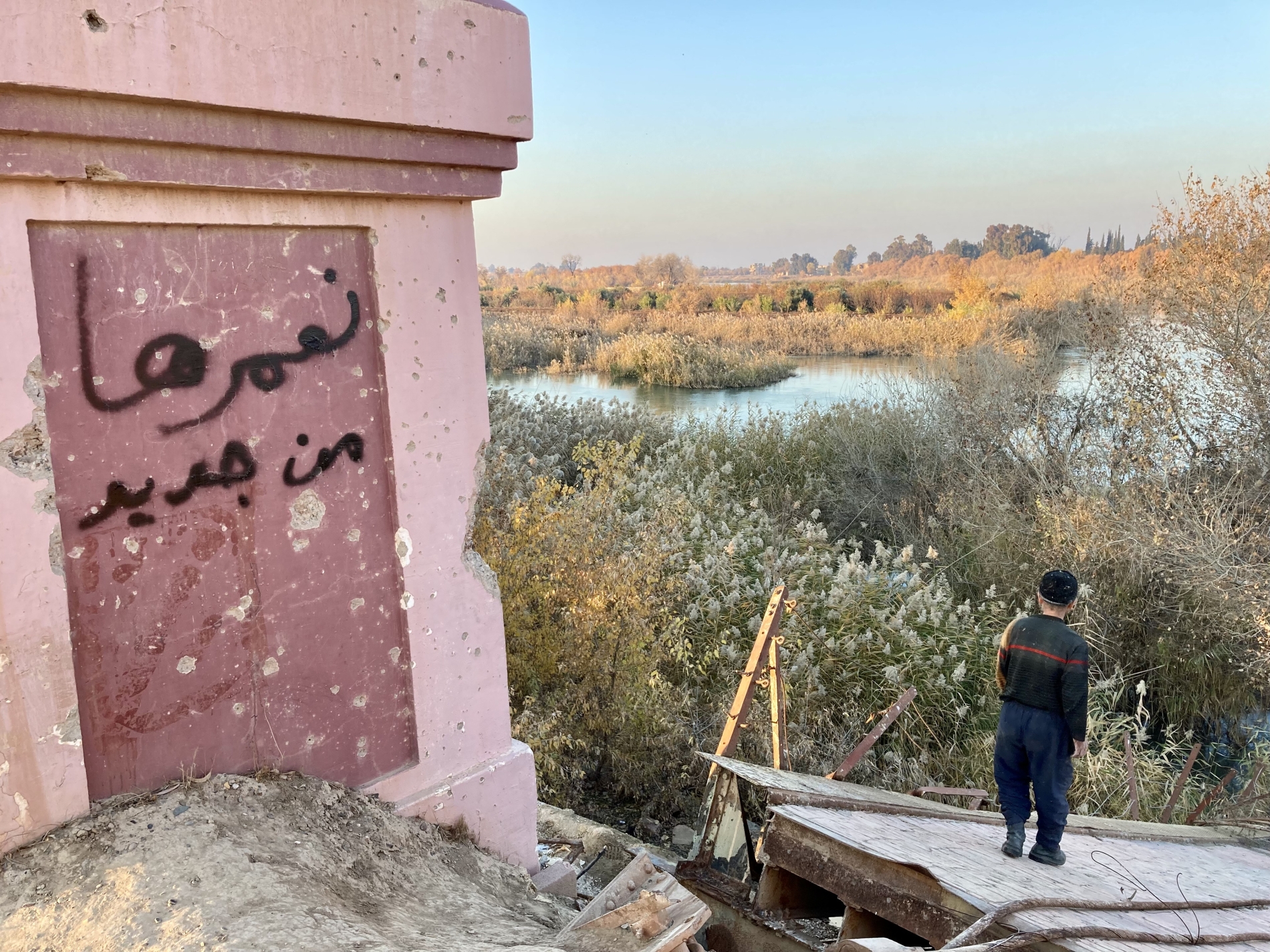
“We would be arrested,” he and others claim, by the Kurdish-led forces there.
Further north in the eastern part of the Aleppo region, sporadic but persistent clashes between forces answering to the central government and ones across the river, the US-backed Syrian Democratic Forces (SDF), continue.
The SDF’s raising of the new Syrian government flag at the Semelka border on Sept. 28 alongside that of their own at a crossing between northeastern Syria and the Kurdistan Region of Iraq seems to have only deepened reigning distrust.
The next day, Iraqi Kurdish media outlet Rudaw quoted Syrian government public relations official Mazen Alloush as stating that the move was “unilateral” by the SDF and that its purpose was to “confuse matters”.
The previous week, Syrian president Ahmed al-Sharaa had said during his visit to New York that the SDF was delaying a March agreement to integrate the Kurdish-led forces into state institutions, noting that Kurds accounted for only a quarter of the population under SDF control.
The population of the Deir ez-Zor governorate prior to the 2011 uprising was instead almost entirely Arab.
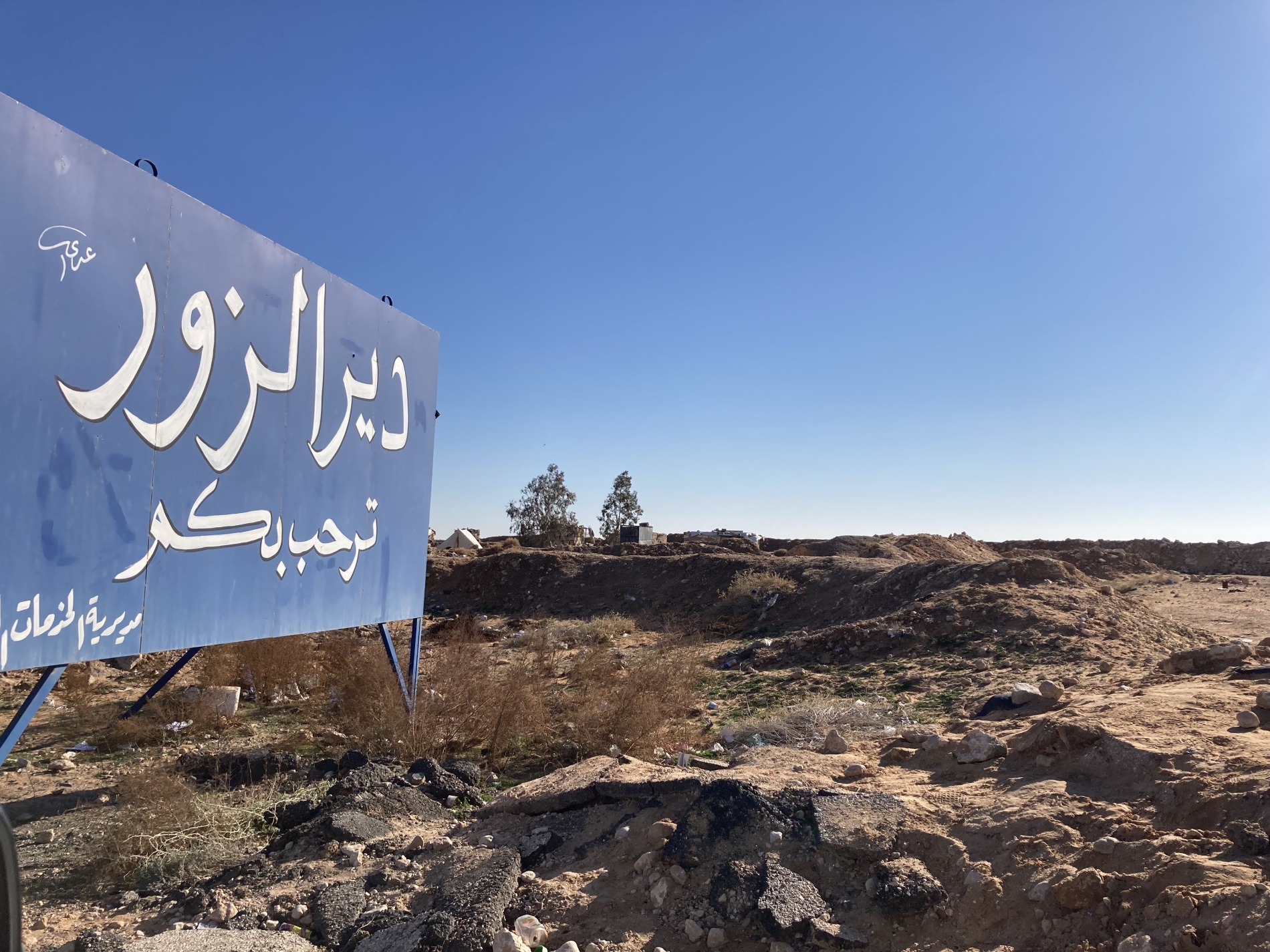
‘Terrorists’ and tribes
Requiring a four-hour drive from Damascus through the Syrian desert in an off-road vehicle, at times six or more in less well-maintained vehicles or at night, the city of Deir ez-Zor on the western banks of the Euphrates River is now peaceful and ready for development despite the massive amount of rubble and destruction, local inhabitants say.
The regional capital is considered the most heavily destroyed in the country and bears witness to the extreme violence that forces under former dictator Bashar al-Assad were willing to inflict on communities that rose up against them. Buildings in the city with minimal or no damage can be seen only in areas that did not fall to the opposition forces in the early years of the armed uprising: prior to the Islamic State (IS) taking over, and then the regime retaking control.
Both the young man accompanying me and many others here fled when IS took over and returned only in recent months from Idlib and parts of Aleppo.
Deir ez-Zor is the capital of a governorate of the same name that some claim much of the future of the new Syrian government may depend on: still cut in two, with its eastern oil-rich half still under the control of the Kurdish-led SDF.
On the eastern side—with its largely rural communities, oil fields, and bases until this year used by US-led international coalition forces—attacks of unclear origin continue, with some warning of a possible IS insurgence. Others claim this is exactly what the Kurdish-led SDF would like and is possibly fostering in order to continue receiving international support while ruling over an Arab-majority area.
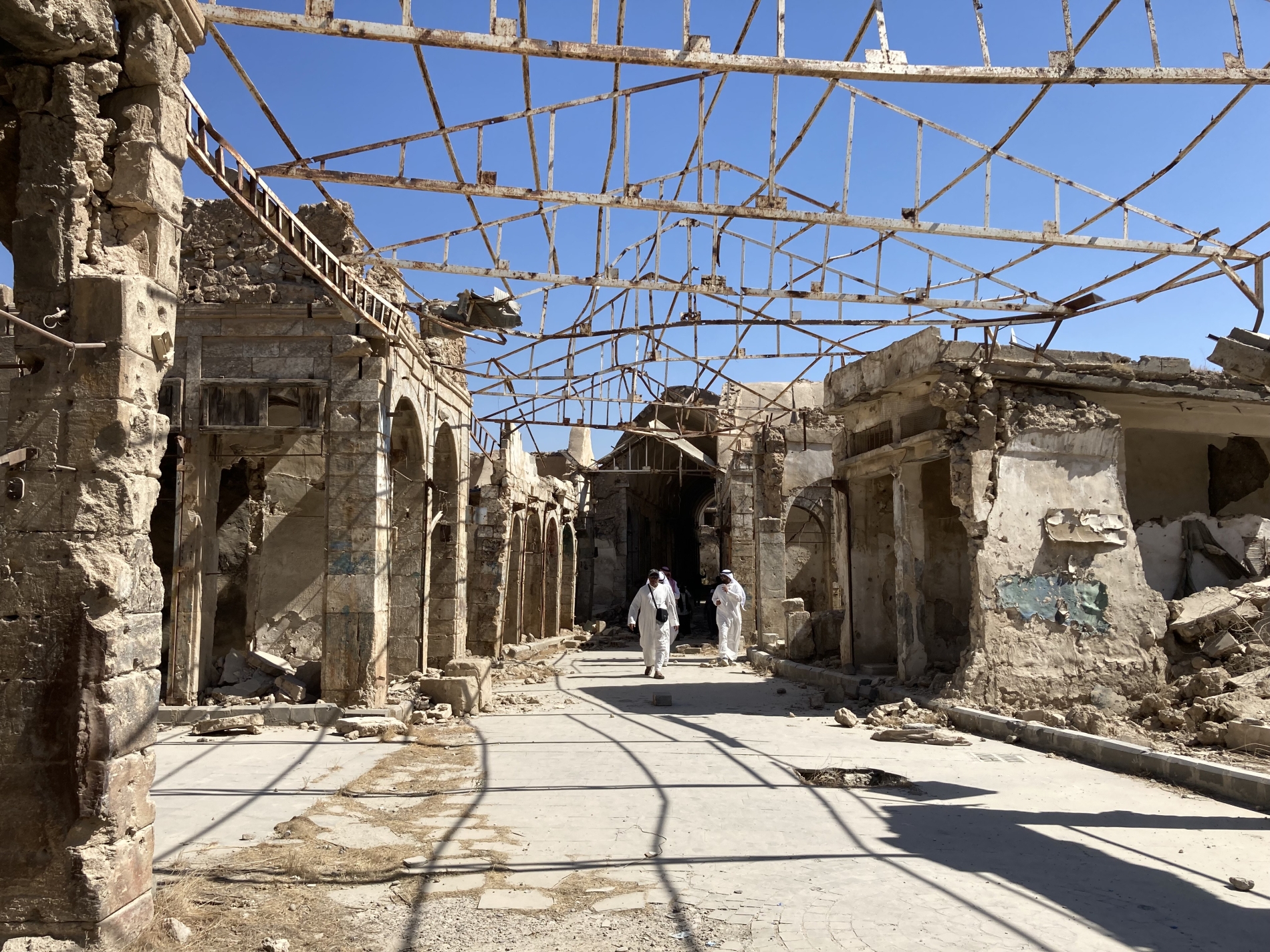
While rumours of an impending operation to retake the eastern part by force have circulated for months, increasing impatience with what many consider stalling methods used by the SDF in relation to a March agreement and reports of recruitment on that side of the river as well as other indications of preparation for battle have led some to surmise that few options other than using force remain: they admit, however, that this will likely lead to bloodshed, despite few wanting to see any more of this after so many years and losses sustained.
However, a reported rise in SDF forced conscription tunnel construction in areas under their control is seen by Arabs here as a sign that further stalling may only lead to greater entrenchment of the forces across the river, ultimately making it harder to unify Syria.
The core leadership of the SDF has its origins in the Kurdistan Workers Party (PKK), which Türkiye, the US, and the EU consider a terrorist organisation. As part of an ongoing peace process and following an announcement in May, the PKK is officially planning to dissolve: PKK-linked groups, here, however, are not. Some claim that the PKK has long planned to use this corner of Syria as a place of refuge, training, and regrouping with the support of either Israel, Iran—or both.
This would, however, prevent many of the millions still displaced across Syria and abroad from returning home, as well as create problems for the government in Damascus.
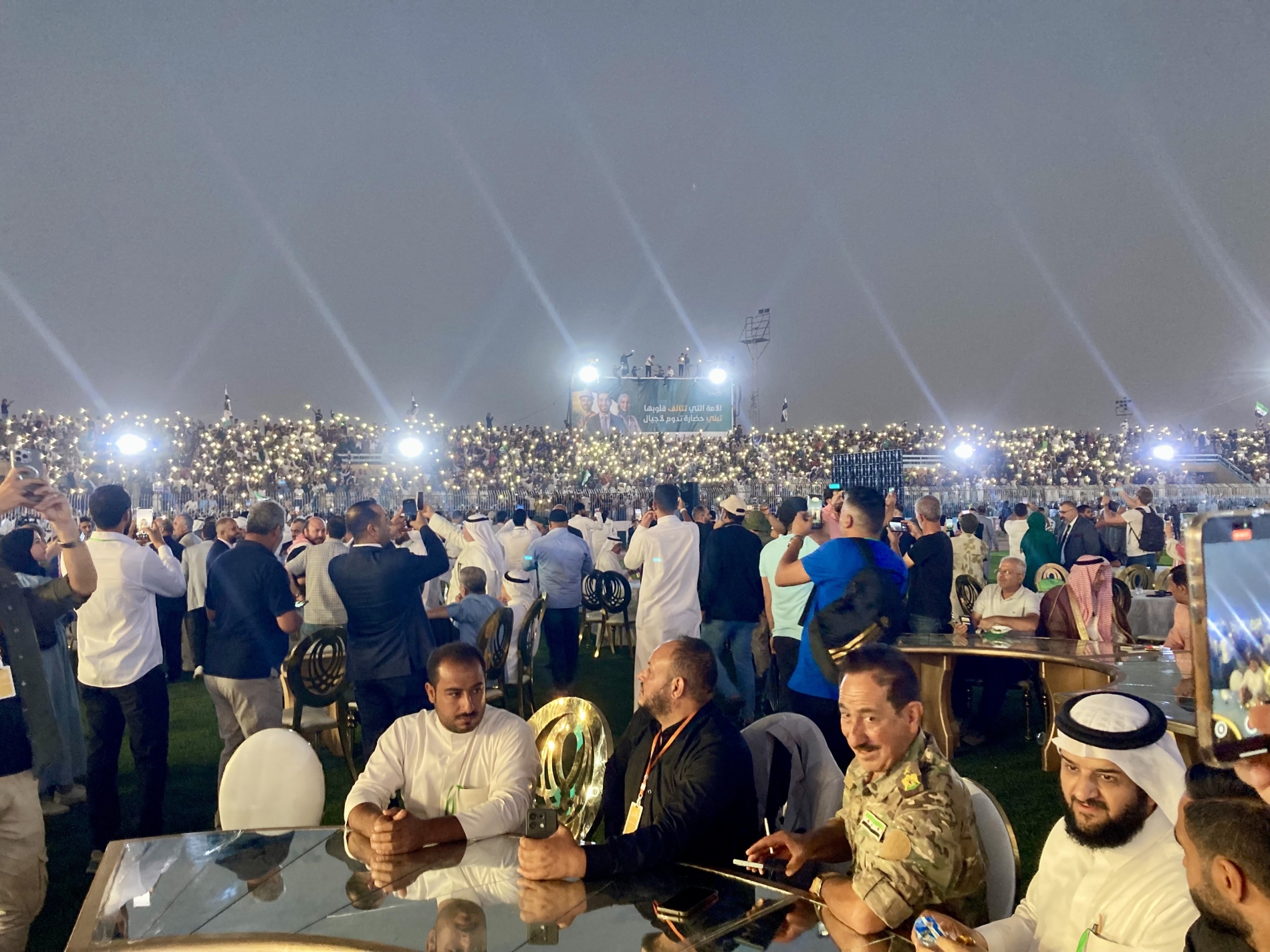
Prior to a major reconstruction fundraising event in the Deir ez-Zor stadium on 11 September, one sheikh from the eastern banks of the Euphrates, still under the SDF, told Al Majalla, practically spitting out the words, “the SDF wants to drag the region into war” and that it is a “criminal gang occupying our lands”.
“It refuses to implement agreements with the Syrian government,” said Sheikh Faraj, who is from the Bu Shabaan, the largest tribe in the country. “It arrests civilians and raids homes under the pretext of searching for and arresting IS fighters. This is all a lie. It seeks to make people hate Arabs,” while “aiding IS to carry out” attacks and “releasing IS fighters”.
“We would prefer to get back our land through peaceful means,” he added. “But we are ready to fight. All of us. The tribes will stand by one another.”
In response to questions sent by Al Majalla on 28 September via encrypted messaging to an inhabitant this correspondent had previously met with in his hometown on the SDF-controlled eastern side of the Euphrates, a young man in his twenties from the town of Breha also claimed that “I am certain that all the people of Deir ez-Zor want to join the government forces”.
The young man has had multiple close male relatives killed by the former regime and IS, and at least one reportedly killed by the SDF.
In response to what was happening on the ground in his town now, he said that there have recently been “assassinations and bombings, as usual. It's become normal. Yesterday, a car was targeted and blown up. The day before yesterday, an (SDF) military post was targeted and four (SDF) soldiers were killed.”
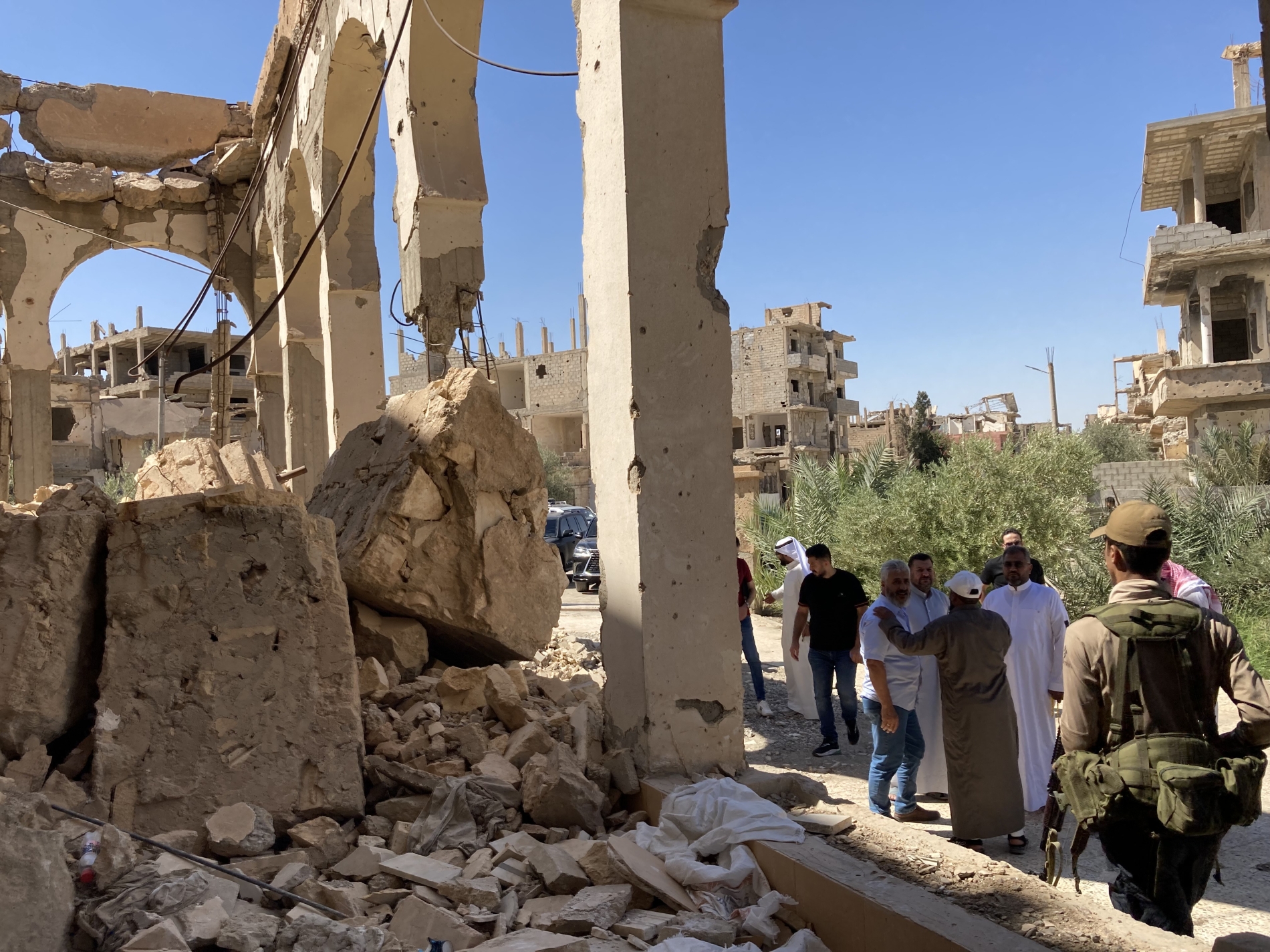
History and hostility
Since first reporting from SDF-held areas of Deir ez-Zor in 2019, I have been repeatedly told of alleged abuses by the Kurdish-led forces, price gouging in Arab areas compared with the Kurdish ones, lack of services, and— prior to al-Assad’s ouster late last year—concerns about collaboration between the SDF and the Syrian regime.
Though Arabs nominally exert some sort of control over their own regions, most people on the ground claim that no real decision-making is in their hands and that any sign of real disagreement can be fatal.
Some weeks after I interviewed him in his hometown in eastern Deir ez-Zor in January 2021, the Arab co-chair of the Deir ez-Zor civil council at that time, Ghassan al-Youssef, was targeted by what many saw as an assassination attempt.
When returning from Raqqa, Youssef and his escorting vehicles were shot at, and one of his relatives was killed at what he called a “flying checkpoint”, though the men manning the checkpoint “fled immediately after they shot at us,” he told me then.
SDF-linked media later claimed the men who shot and killed Youssef’s relatives were in fact their own security forces, but that the latter had been “under intense pressure from security threats in the region”.
Meanwhile, supporters of the SDF claim that they are the sole bulwark against a resurgence of IS across the region and guarantor of women’s rights due to their focus on military training for women and inclusion within their ranks and administrative roles. SDF-linked media figures and outlets regularly use incendiary language against central government forces, calling them “terrorists” and warning of what might happen if the Damascus government were to take control of the northeastern part of the country.
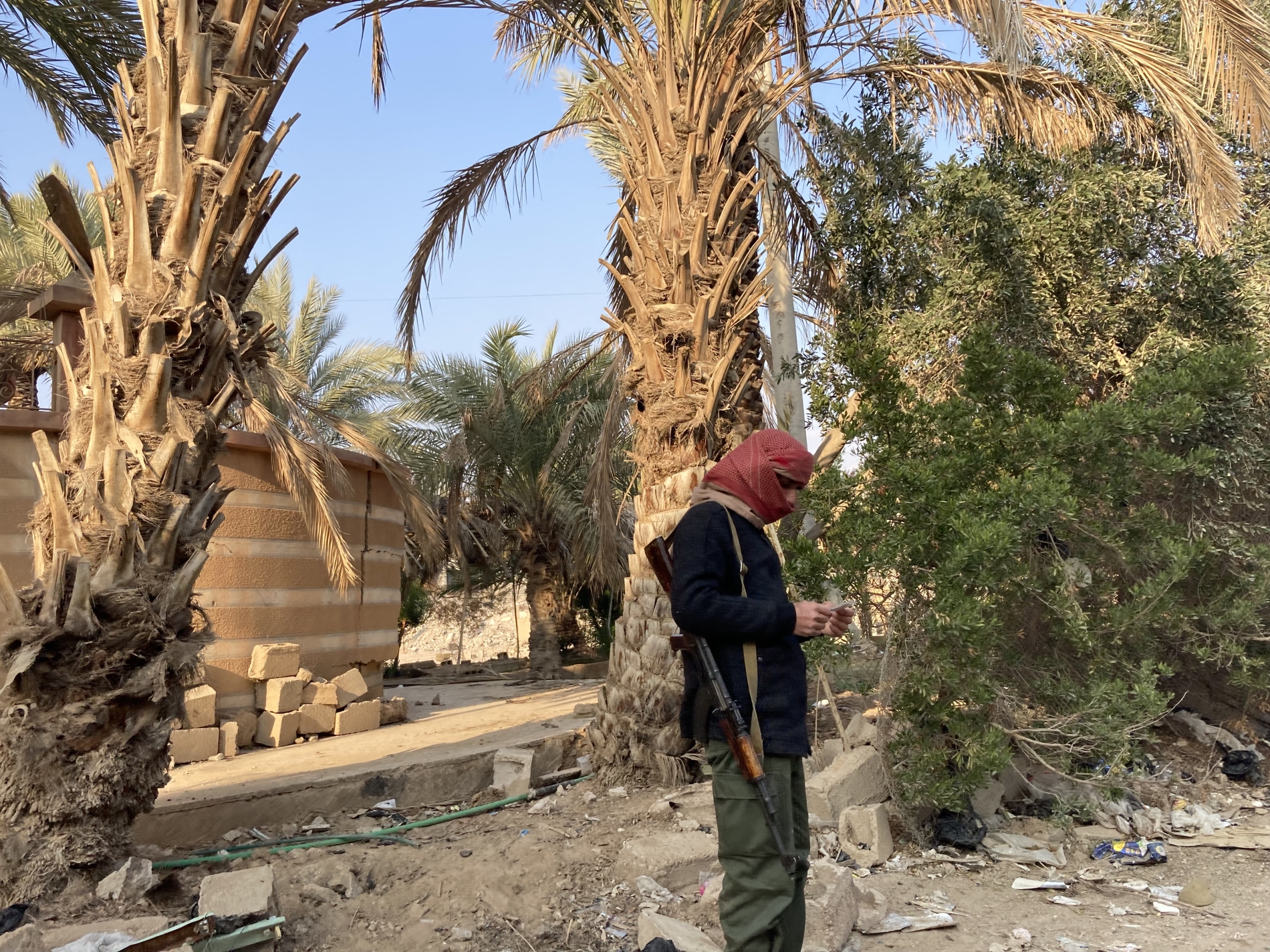
Defectors and disappointment
One Arab former SDF commander who defected after the 8 December takeover of the country told Al Majalla on 26 September that, in the parts of the governorate still under SDF control, “the people view the Syrian government as a tool to rid themselves of the SDF occupation.”
“If the international coalition stops supporting the SDF, the SDF will not have the men or means” to retain control of the area, he claimed.
In recalling his days as a fighter within the ranks of the opposition that rose up against the regime prior to the 2014 exodus from the area due to IS, he noted that “we fought on the ground for months with no air support” but “if there are no (coalition) planes, the SDF simply doesn’t fight.”
“When I was fighting alongside the SDF,” he said, with a hint of disgust, “we noticed that the fighters would only advance after the ground in front of them had been cleared by aircraft.”
“They don’t fight a single battle without" external support, he claimed.
Notably, following years of war and closed borders, there is a very high a very level of unemployment in Syria in general and few ways to support oneself and one’s relatives, especially for those whose studies were interrupted by the conflict. Many in Deir ez-Zor had taken up arms against the Syrian government and fought against both it and IS prior to the arrival of the SDF in their area.
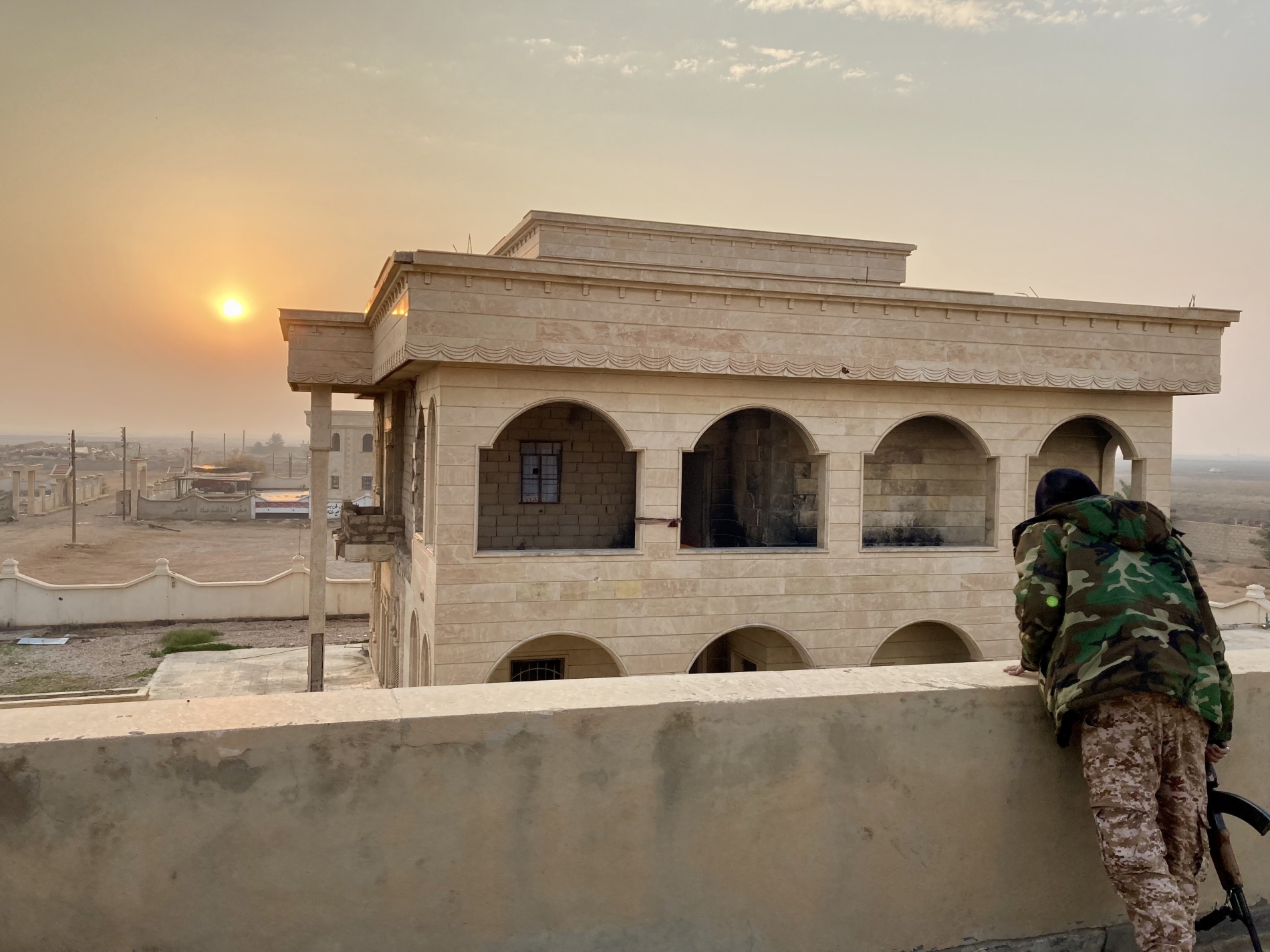
However, in recent months, “a large number of young men from the region,” the former Arab SDF commander claimed, “have joined the Syrian defence ministry or interior ministry” if they are in central government territory.
But “even the young men officially working for the SDF,’ he said, “either provide us with information or (are with the SDF because) they are afraid of being held accountable (by the central government) for actions they did against people”.
Many Arabs living in Deir ez-Zor have since 2019 lamented that the SDF have at times put former local IS members in intelligence and command roles in Arab areas so as to ensure that they can exert greater control and ensure loyalty: the reasoning, they claim, is that these individuals have nowhere else to turn to except the SDF, due to their past in a group that killed thousands among their own communities.
The vast majority of those killed and displaced by IS during its years in control of vast swaths of Syria and neighbouring Iraq were Sunni Arabs.
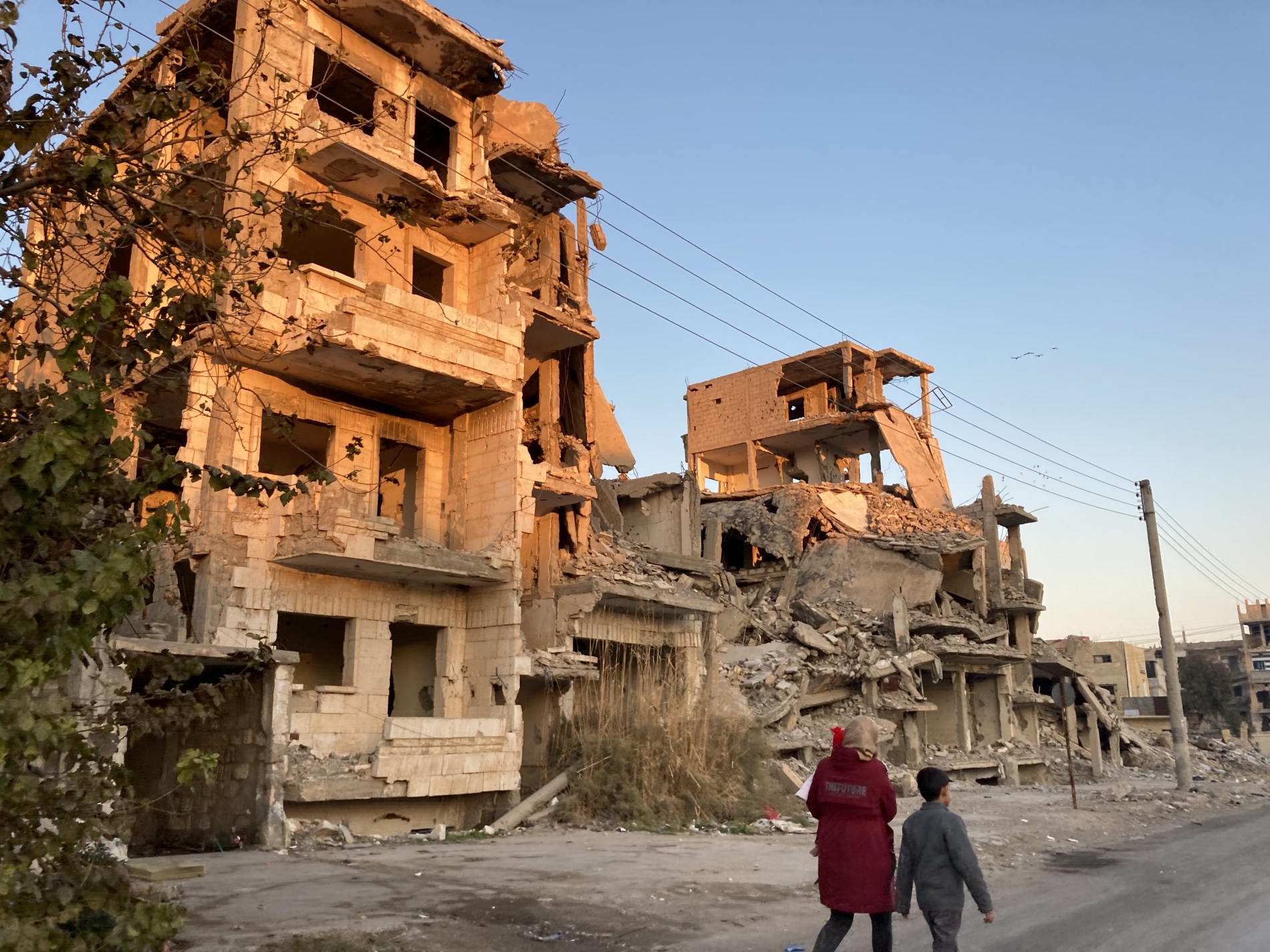
History of IS massacres
The SDF-controlled Shaitat tribal area, comprising the small towns of Abu Hamam, Kishkiya, and Garanij, has experienced multiple acts of violence in recent weeks.
These towns were the site of a 2014 massacre in which at least 1,000 mostly young men and boys were killed after the tribe rose up against IS. Mass graves in the area remained unexcavated.
During multiple trips to the Shaitat tribal area between 2019 and 2020, members of the tribe who remained through the years of “occupation” by IS pointed out to me where the decapitated heads of their relatives had been placed as a warning not to rise up ever again.
While many told me during those visits that they preferred the SDF to the regime under Bashar al-Assad and IS, they suspected that the SDF was collaborating with the regime and claimed that the SDF was “lying to the coalition about us”, requesting direct contact with the US-led coalition.
Multiple natives of Deir ez-Zor who are now officers within the government in Damascus were also accused of formerly being in IS in a 2021 report issued by the organisation Syrians for Truth and Justice (STJ).
A commander known as Abu Shehab al-Tayyana is one of them. Multiple local sources, however, including men who had fought alongside him and who had had family members killed by IS, have called the claim baseless. A request for comment from STJ had not received a response by the time of publication.
In speaking to Al Majalla earlier this year, before the defence ministry prohibited those under its command from giving media interviews without prior permission, Tayyana described in detail operations he had led to catch IS members, including one who had been involved in the Shaitat massacre, as well as French IS nationals.
He said that multiple of his relatives had been killed by IS and claimed he had always fought against it, and that any accusations to the contrary were “absurd”.
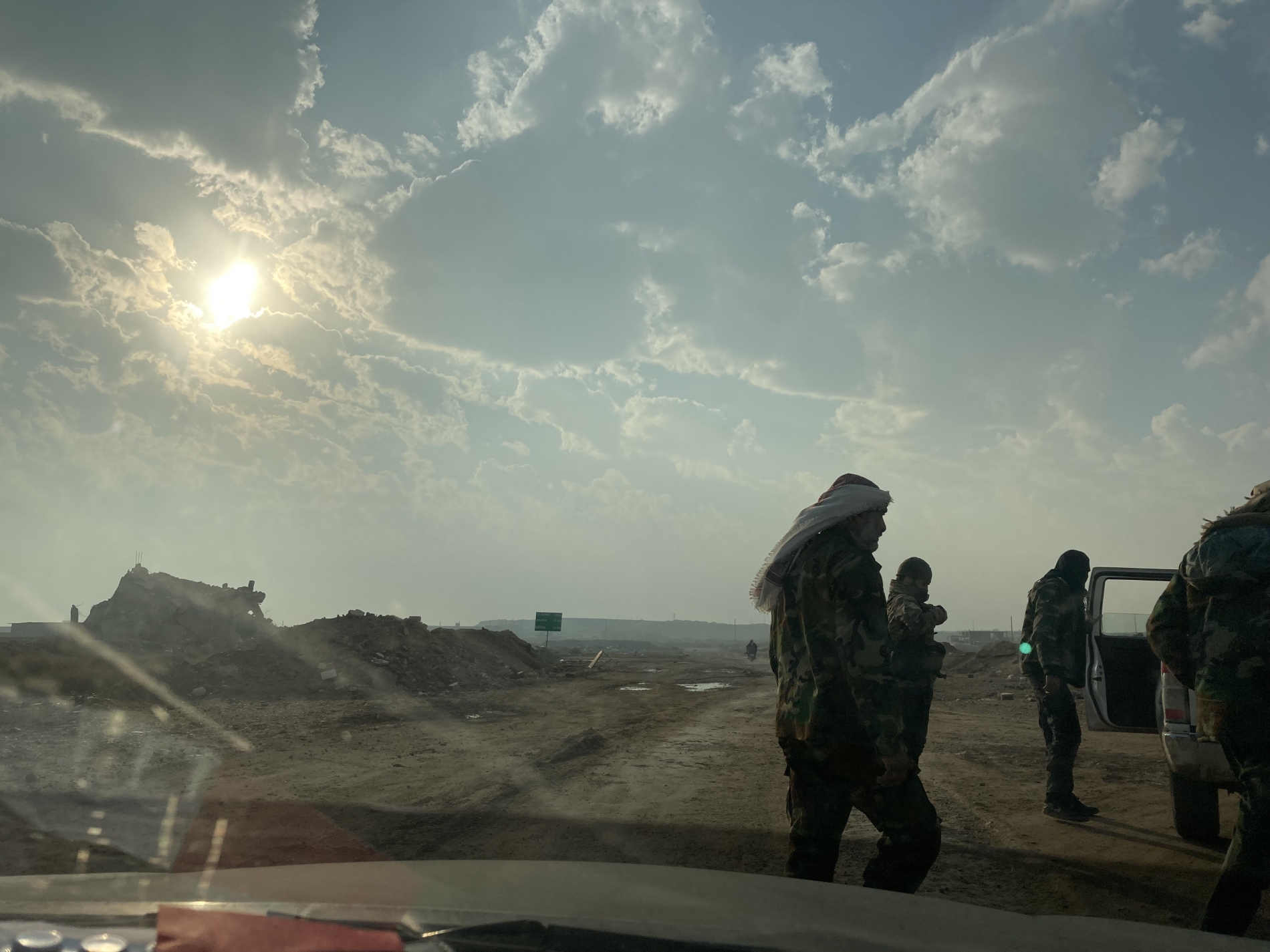
Risk of IS resurgence
Although both the Raqqa and Al-Hasakah governorates have large numbers of people who say they would prefer to be under Syrian central government control, the former Arab SDF commander who asked that his name not be used told Al Majalla in one of multiple interviews with him in recent months that Deir ez-Zor “is considered the main one to rebel against the SDF.”
In September 2023, as I reported then for Al Majalla, a “spark was lit in the eastern part of the Deir ez-Zor province, from which complaints of arbitrary arrests and other discriminatory practices had for years been ignored. Calls for the mobilisation of fighters and young men in general ensued” during a major uprising that led to the SDF briefly losing control over some territory.
Now, “many military operations are recorded daily by the local population” by people who are often “falsely accused” of being IS, the former Arab commander said.
“The locals carry out these attacks voluntarily, out of sheer patriotism,” he claimed. “These operations put significant pressure on the SDF. However, unfortunately, some residents (of Deir ez-Zor) are working with the SDF for their own material gains.”

